Abstract
1. Oxytocin and vasopressin were assayed in samples of blood collected from seven conscious rabbits during parturition.
2. Oxytocin was detected in the blood in ten out of fourteen samples collected during the expulsion of one or more foetuses. Four samples contained 6-100 μu./ml., three 100-200 μu./ml. and three 200-500 μu./ml.
3. Vasopressin was detected in six blood samples collected during the delivery of foetuses but in only one experiment did the amount exceed that found in the corresponding control sample collected before or after delivery.
4. When both hormones were detected in the same blood sample, the ratio of oxytocin to vasopressin varied from 5:1 to at least 26:1.
5. It is concluded that, while oxytocin may not be essential for parturition in the rabbit, stretching of the birth canal during the expulsion of foetuses normally acts as a stimulus for the reflex release of oxytocin from the neurohypophysis and that oxytocin is released independently of vasopressin.
Full text
PDF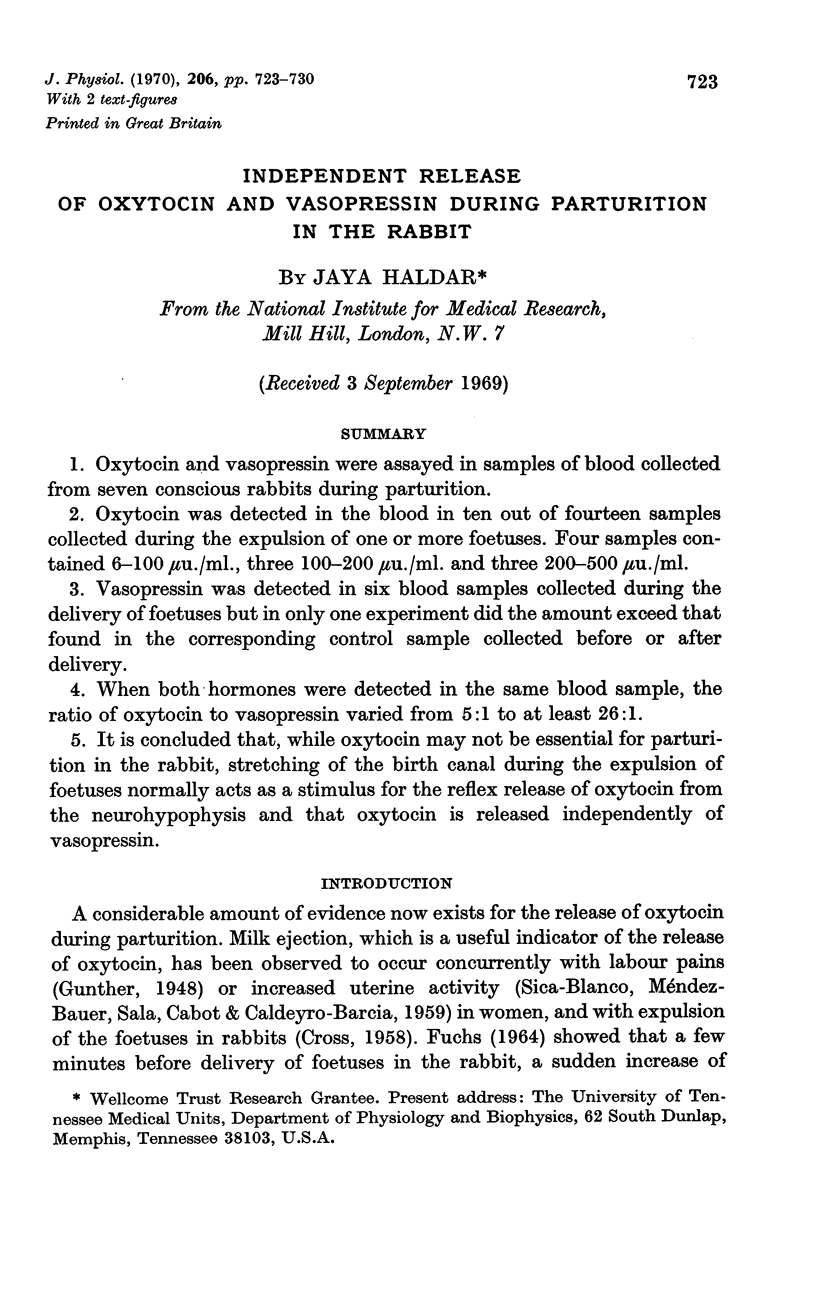
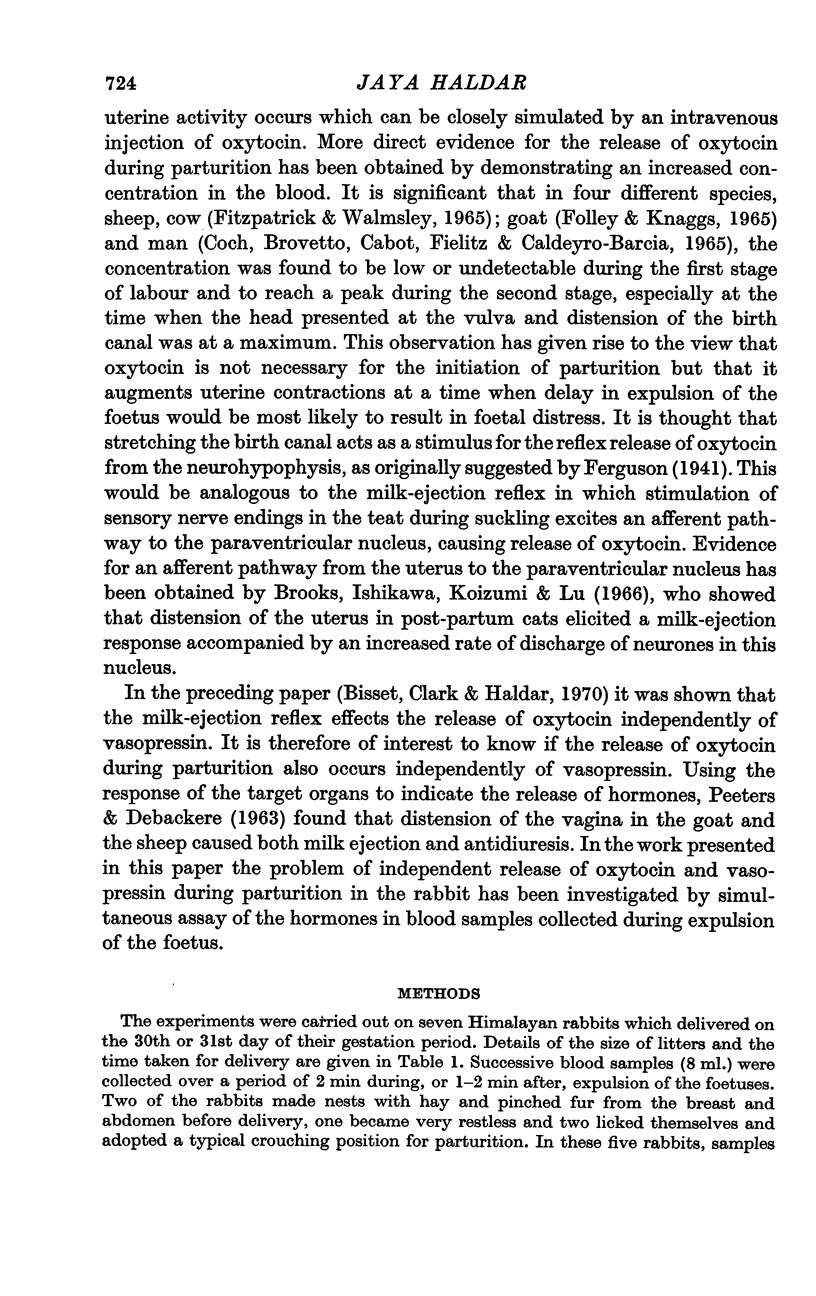
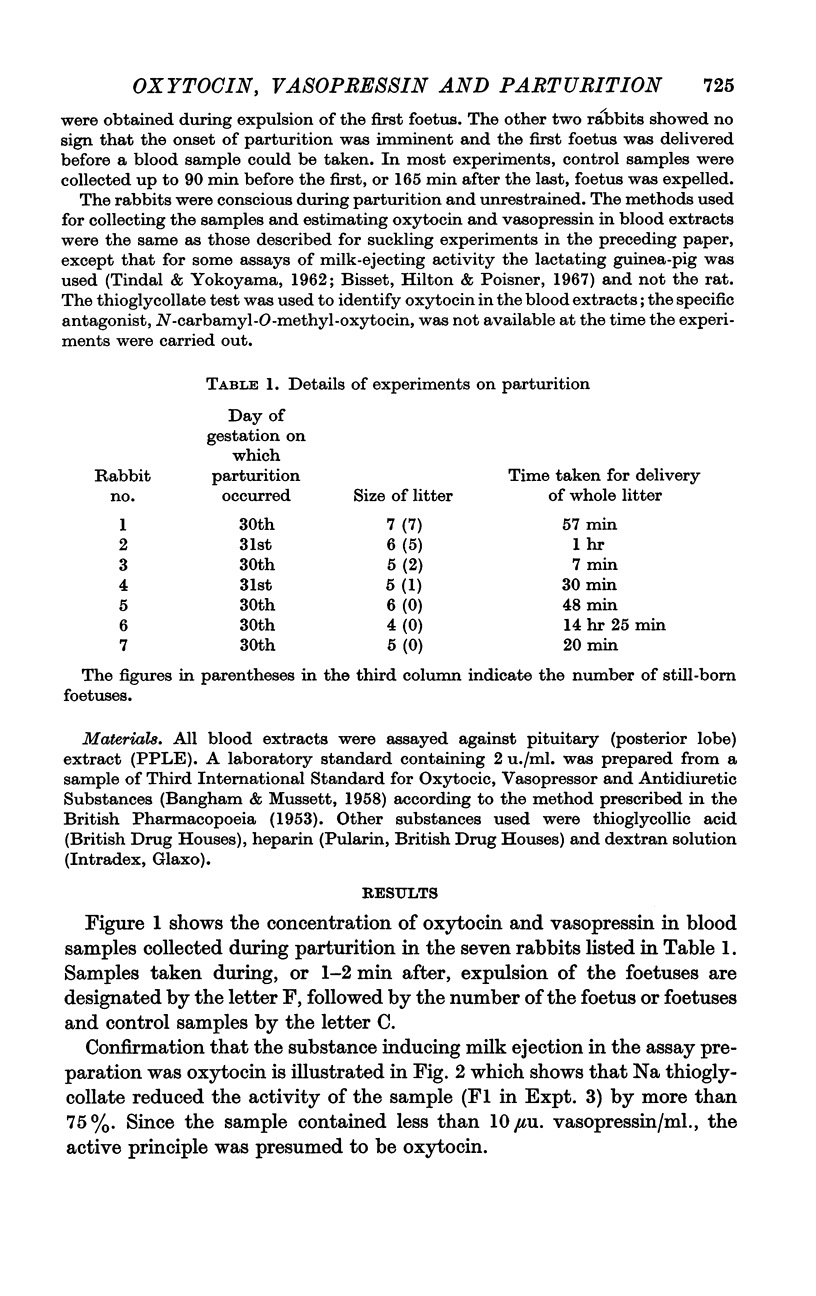

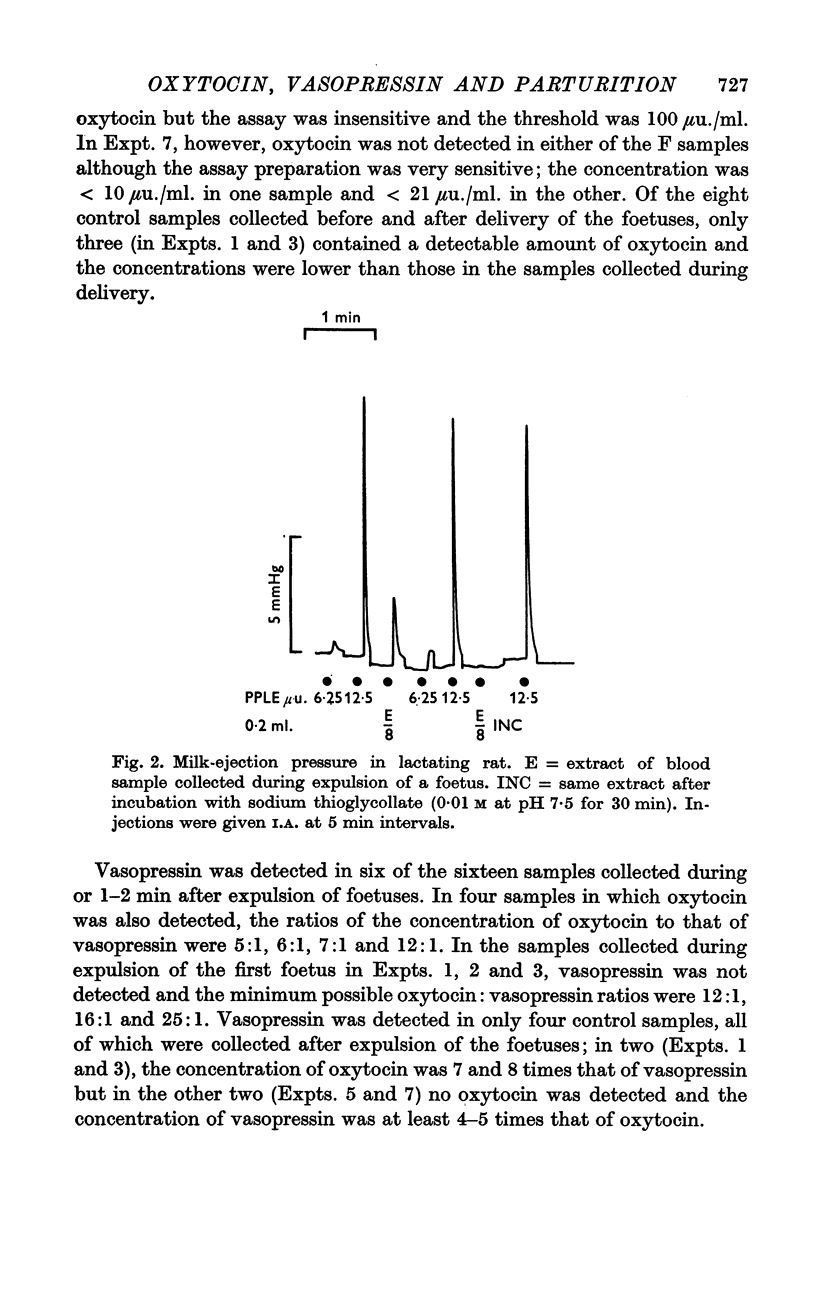
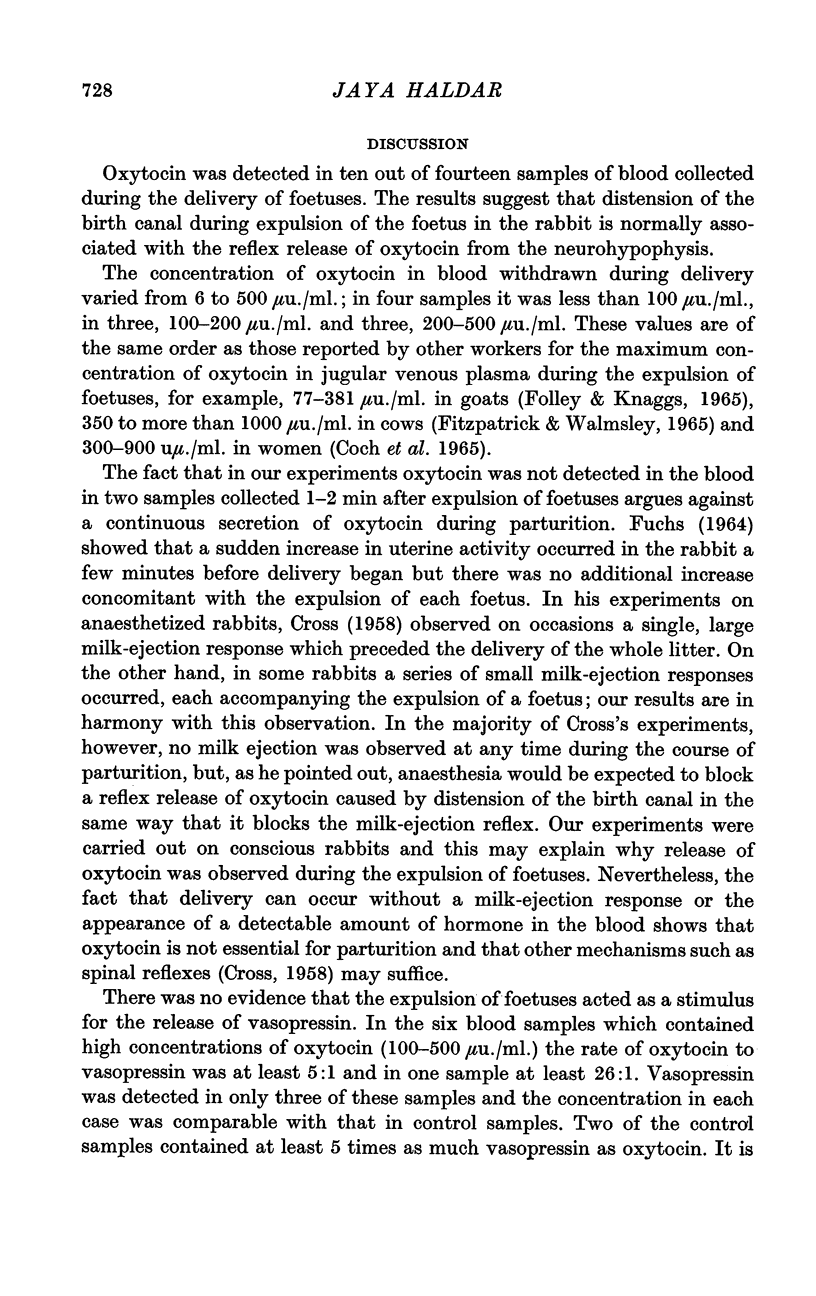
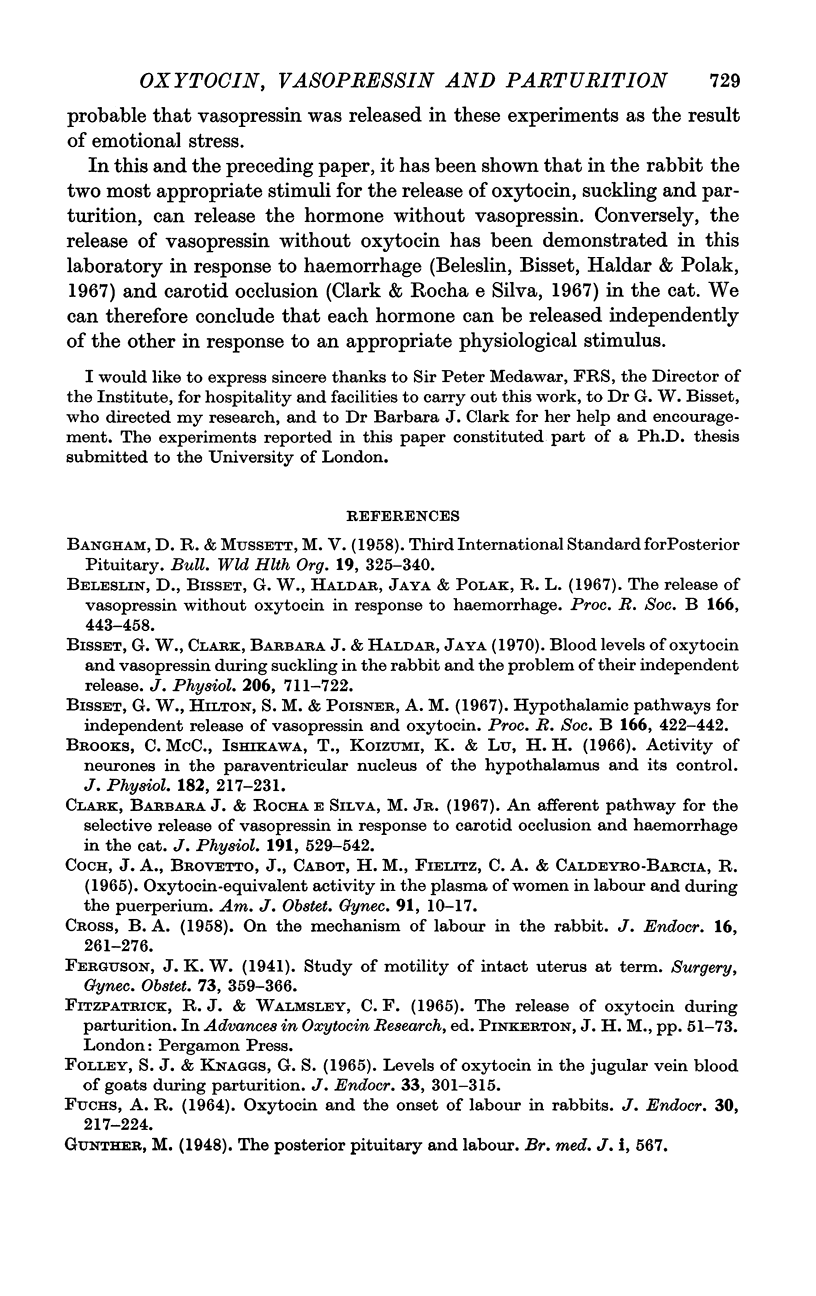
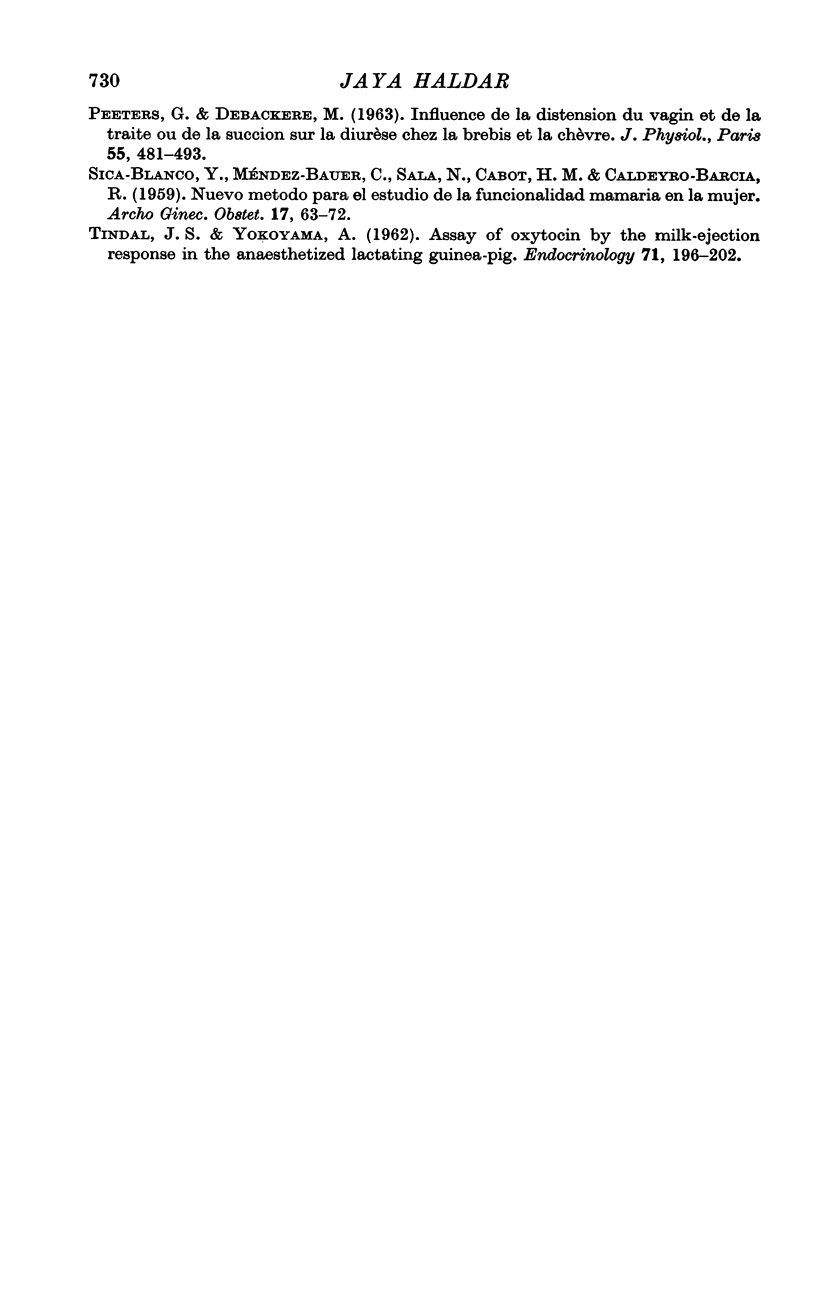
Selected References
These references are in PubMed. This may not be the complete list of references from this article.
- BANGHAM D. R., MUSSETT M. V. Third international standard for posterior pituitary; re-named third international standard for oxytocic, vasopressor and antidiuretic substances in 1956. Bull World Health Organ. 1958;19(2):325–340. [PMC free article] [PubMed] [Google Scholar]
- Bisset G. W., Clark B. J., Haldar J. Blood levels of oxytocin and vasopressin during suckling in the rabbit and the problem of their independent release. J Physiol. 1970 Mar;206(3):711–722. doi: 10.1113/jphysiol.1970.sp009039. [DOI] [PMC free article] [PubMed] [Google Scholar]
- Brooks C. M., Ishikawa T., Koizumi K., Lu H. H. Activity of neurones in the paraventricular nucleus of the hypothalamus and its control. J Physiol. 1966 Jan;182(1):217–231. doi: 10.1113/jphysiol.1966.sp007820. [DOI] [PMC free article] [PubMed] [Google Scholar]
- COCH J. A., BROVETTO J., CABOT H. M., FIELITZ C. A., CALDEYRO-BARCIA R. OXYTOCIN-EQUIVALENT ACTIVITY IN THE PLASMA OF WOMEN IN LABOR AND DURING THE PUERPERIUM. Am J Obstet Gynecol. 1965 Jan 1;91:10–17. doi: 10.1016/0002-9378(65)90580-6. [DOI] [PubMed] [Google Scholar]
- CROSS B. A. On the mechanism of labour in the rabbit. J Endocrinol. 1958 Feb;16(3):261–276. doi: 10.1677/joe.0.0160261. [DOI] [PubMed] [Google Scholar]
- Clark B. J., Silva MR Jr E. An afferent pathway for the selective release of vasopressin in response to carotid occlusion and haemorrhage in the cat. J Physiol. 1967 Aug;191(3):529–542. doi: 10.1113/jphysiol.1967.sp008266. [DOI] [PMC free article] [PubMed] [Google Scholar]
- FUCHS A. R. OXYTOCIN AND THE ONSET OF LABOUR IN RABBITS. J Endocrinol. 1964 Sep;30:217–224. doi: 10.1677/joe.0.0300217. [DOI] [PubMed] [Google Scholar]
- Folley S. J., Knaggs G. S. Levels of oxytocin in the jugular vein blood of goats during parturition. J Endocrinol. 1965 Oct;33(2):301–315. doi: 10.1677/joe.0.0330301. [DOI] [PubMed] [Google Scholar]
- PEETERS G., DEBACKERE M. INFLUENCE DE LA DISTENSION DU VAGIN ET DE LA TRAITE OU DE LA SUCCION SUR LA DIUR'ESE CHEZ LA BREBIS ET LA CH'EVRE. J Physiol (Paris) 1963 Jul-Aug;55:481–493. [PubMed] [Google Scholar]
- TINDAL J. S., YOKOYAMA A. Assay of oxytocin by the milk-ejection response in the anesthetized lactating guinea pig. Endocrinology. 1962 Aug;71:196–202. doi: 10.1210/endo-71-2-196. [DOI] [PubMed] [Google Scholar]


